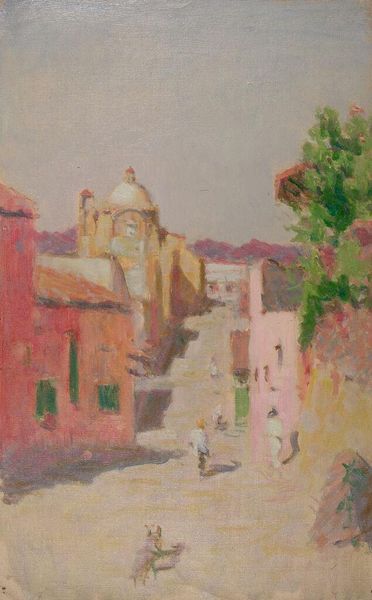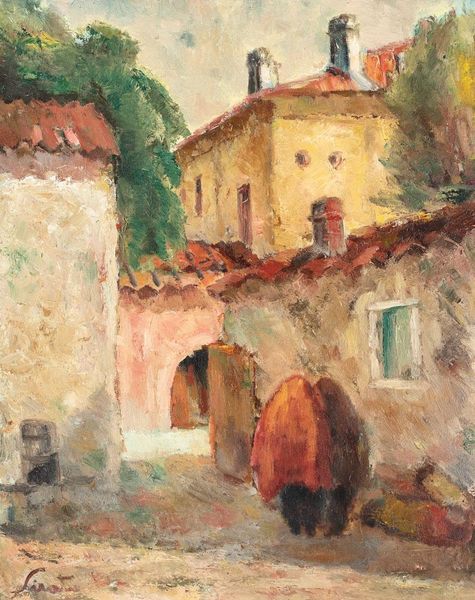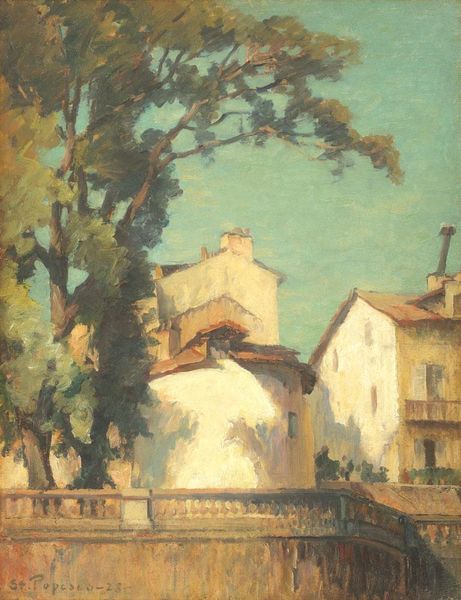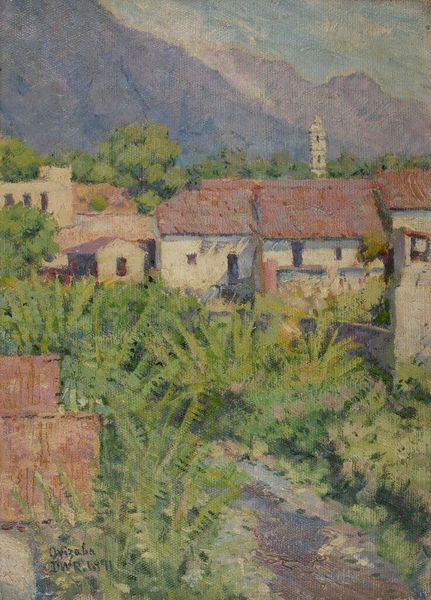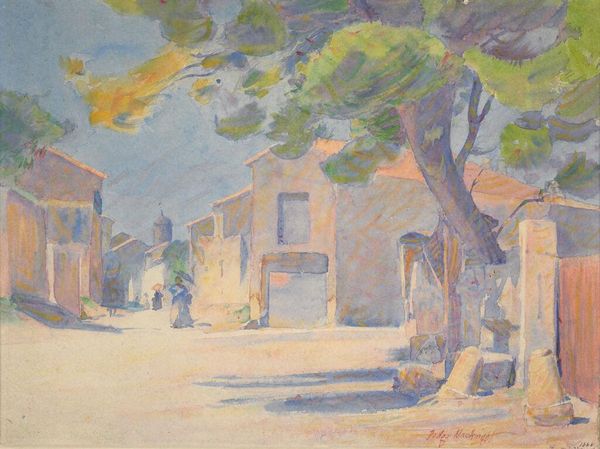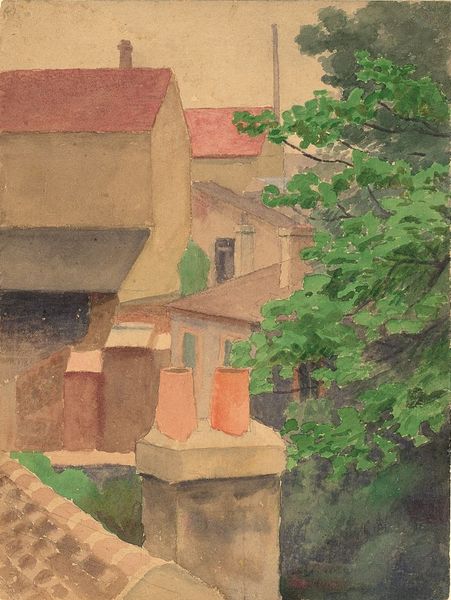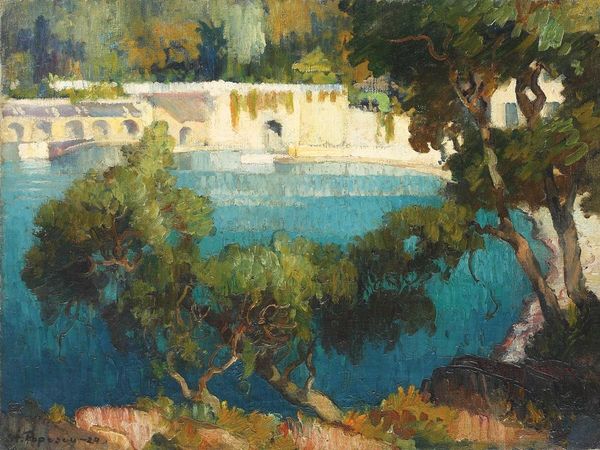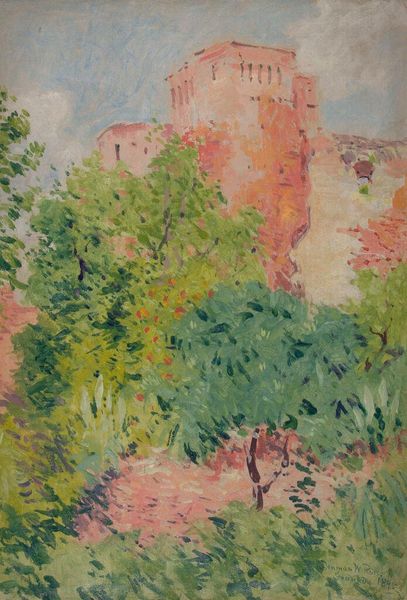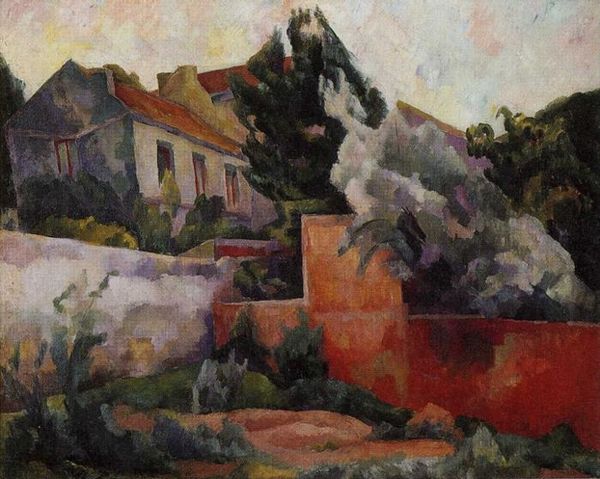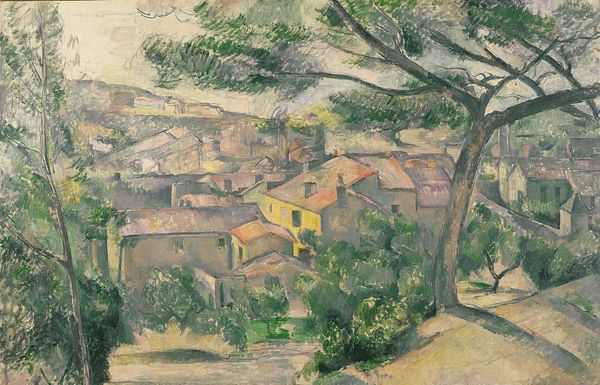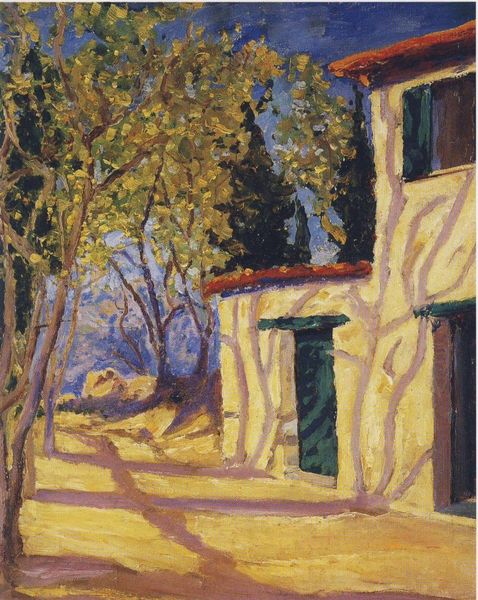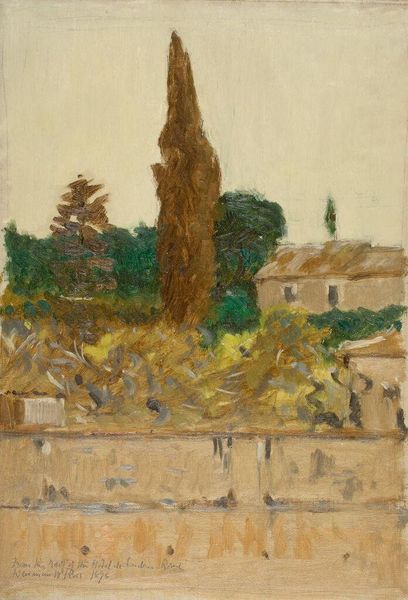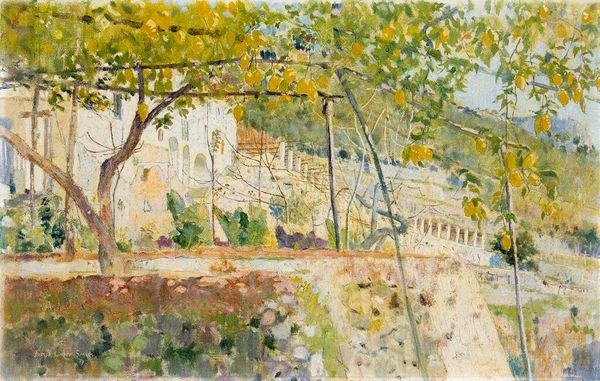
#
tree
#
abstract painting
#
rural-area
#
impressionist landscape
#
possibly oil pastel
#
oil painting
#
acrylic on canvas
#
underpainting
#
naturalistic tone
#
painting painterly
#
watercolour illustration
#
watercolor
Copyright: Augustus John,Fair Use
Editor: Here we have Augustus John's "Mas de Galeron," painted in 1950. It depicts what seems to be a sun-drenched building in a rural setting. It feels both intimate and grand somehow. What strikes you about this work? Curator: Immediately, I see the interplay between nature and civilization, typical for its time. The imposing stonework supporting, and yet being softened by, the organic elements of the tree. It reflects a tension between man’s impact on the landscape and nature's enduring presence. What role did spaces such as these fulfill within society? Where might members gather? The artist positions themself outside the social structure, an observer, rather than someone who would partake in it. Notice the somewhat muted color palette, in contrast to his earlier, more vibrant landscapes. How does that influence your perception? Editor: I see what you mean. The colors give it a sense of faded grandeur, like looking at a cherished memory. So, do you think the subdued tones are intentional, perhaps commenting on societal shifts of the mid-20th century? Curator: Precisely. World War II cast a long shadow. Artists, grappling with unprecedented social upheaval, began reflecting the instability, their cultural anxieties of the era, through their art. Think about the post-war rebuilding efforts across Europe. This painting almost suggests something that has lasted despite these shifting dynamics, creating both beauty and distance in the world. Editor: That’s fascinating. I never considered that angle before, but it gives the artwork a whole new layer of meaning. Curator: Art serves as a historical mirror, and "Mas de Galeron" showcases society's complex dialogue with nature and its grappling with history. Reflecting on these social implications, we see more than just pretty buildings and landscapes. It allows us to connect to humanity and gain fresh perspective, and perhaps see art, and the role that spaces hold, differently than we did before. Editor: I completely agree. It is as though John captured that fleeting, fragile beauty of the region at that specific moment in history.
Comments
No comments
Be the first to comment and join the conversation on the ultimate creative platform.
